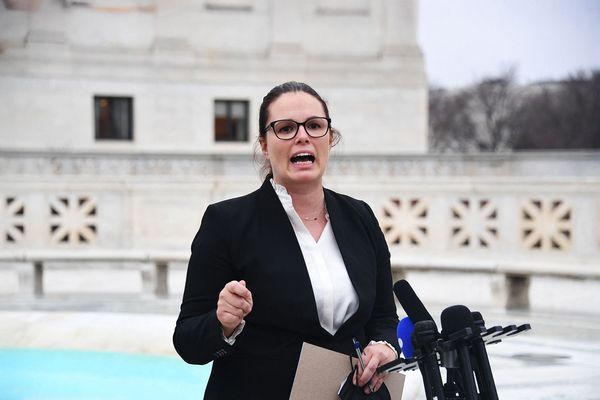July 20th marks the 50th anniversary of the Apollo 11 landing in the Sea of Tranquility, the first time any human stepped foot on the moon.
The endeavor came 11 years after the creation of the National Aeronautics and Space Administration (NASA), the government agency created in response to the Soviet Union reaching space first.
The moon landing was part of the Apollo Project that cost more than $150 billion in modern-day dollars. Since Apollo, which resulted in 12 men walking on the moon, the size of NASA’s budget (adjusted for inflation) has shrunk, as did its share of federal spending.
NASA’s share of federal spending peaked in 1966 when its $5.9 billion in expenditures ($46 billion in 2018 dollars) made up 4.4% of federal spending. In 2018, NASA spent $19.8 billion or 0.5% of federal spending.
Here’s a look at NASA’s budget since it was created in July 1958. We looked at not only the topline spending at the government agency, but how much it spent across several initiatives related to space exploration and science.
NASA knew it wanted to get an American on the moon, but had to reach space first.
Project Mercury was NASA’s first program that sent astronauts to space. Six missions sent astronauts to space with four of those missions completing a total of 34 Earth orbits. Between 1959 and 1965, Mercury spending added up to $233.8 million, or $2 billion dollars in 2018 levels.
Project Gemini, the more ambitious program set up as a developmental stepping stone to Apollo, cost a total of $1.3 billion between 1962 and 1968, $10.3 billion in 2018 dollars. The program was notable for missions that included the first American spacewalk, first multiweek space mission and first docking with another space vehicle.
Between 1959, the first year of NASA, and 1973, a year after the most recent moon landing, NASA spent $20.5 billion ($152.7 billion in 2018 dollars) on its lunar directive or 42% of all NASA spending.
The most expensive aspects of the project were the rockets to get astronauts into space and the modules they would travel in. These two needs have consistently been the biggest expenses in the agency’s history.
The command service module, which carried the astronauts from earth to the moon orbit and back (known as Columbia during Apollo 11) cost $3.7 billion throughout the project ($28.3 billion in 2018 dollars.) The technology was used in subsequent missions during the 1970s, including to the Skylab space station and as a part of the Apollo-Soyuz Test Project, a joint project with the Soviet Union.
The lunar module, the vehicle used to land on the moon, cost $2.2 billion or $16.6 billion in 2018 dollars.
The largest portion of Apollo spending went toward developing and building 15 Saturn V rockets, the launch vehicles that help propel missions beyond Earth’s orbit. The $6.4 billion spent on the rockets during the Apollo years represent $47.8 billion in spending in 2018.
The Apollo program resulted in six lunar landings.
In January 1972, months before the final two Apollo missions were flown, President Richard Nixon announced plans for a new way to reach space: the space shuttle. While most of the vehicles used during missions in the 1960s were used just once in spaceflight, the space shuttle would be a reusable vehicle. Nixon said: “[T]he Space Shuttle program is the right step for America to take, in moving out from our present beach-head in the sky to achieve a real working presence in space - because the Space Shuttle will give us routine access to space by sharply reducing costs in dollars and preparation time.”
Six space shuttle orbiters were built, five of which made it to space. Between the first Columbia blast off in 1981 to the final Atlantis touch down in 2011, the space shuttle completed 133 of 135 missions successfully to orbit.
Between 1970 and 2016, space shuttle development, operations and research on parts such as engines and boosters made up $122.1 billion in line-item spending, adding up to $238.6 billion in 2018 dollars.
NASA described the International Space Station in its 2020 budget as “the largest and most complex space-based research facility ever constructed by humanity.”
Partnered with four other space agencies – Roscomos of Russia, the Japan Aerospace Exploration Agency, the Canadian Space Agency, and the European Space Agency – NASA has spent a total of $60 billion on the football field-sized laboratory since 1985, a total that adjusts to $83.5 billion in 2018 dollars.
While a timetable isn’t set yet, the 2020 NASA budget did call for shifting the ISS from NASA sponsorship and funding to a “non-governmental human space flight enterprise” of which NASA is a paying customer.
In 2004, NASA announced the Constellation project, a spaceflight program aimed at returning to the moon by 2020 then eventually taking astronauts to Mars. After $1.2 billion in spending between 2004 and 2009 ($13.5 billion in 2018 dollars), Constellation was scrapped in 2009 due to underfunding and delays.
Not all parts of the projects were lost, however, with designs from Constellation’s Orion spacecraft forming the basis of the new Orion development that began in 2010. Coupled with a new space launch system, the Orion project aims to bring astronauts back to the moon by 2024. The first unmanned Orion launch, Artemis I, is slated to take place in 2020.
Since 2010, NASA has spent $10.9 billion ($11.6 billion adjusted) on Orion and $15.8 billion ($16.8 billion adjusted) on a new space launch system.
Once the Orion mission returns humans to the moon, NASA plans to use that as a springboard to get astronauts to Mars. But the Red Planet has been a focus of exploration and study since the early days of NASA. From the 1960s Mariner missions to the 2020 Mars Rover project, NASA has spent $12.9 billion ($23.5 billion adjusted) on Mars-related projects. (These figures only include line-item spending that explicitly relates to Mars.)
NASA has only begun budgeting for commercial spaceflight and cargo projects beginning in 2010. So far, $12.1 billion ($12.6 billion adjusted), has been spent on such measures.
Other projects
The projects mentioned above account for about 46% of all of NASA’s historical spending. While administrative and on-the-ground costs account for much of the remaining spending, NASA has dozens of other projects related to the earth sciences, astronomy, space exploration, and budgeted categories devoted to education and aeronautics.
Methodology
The outlay and budget data was compiled from a number of sources, including historical tables from the Office of Management and Budget, NASA’s budget files and data books published by the agency
Inflation figures are computed by calculating line item adjustments for each year then summing them up.
USAFacts will make the raw data used in this report available to the public shortly.







